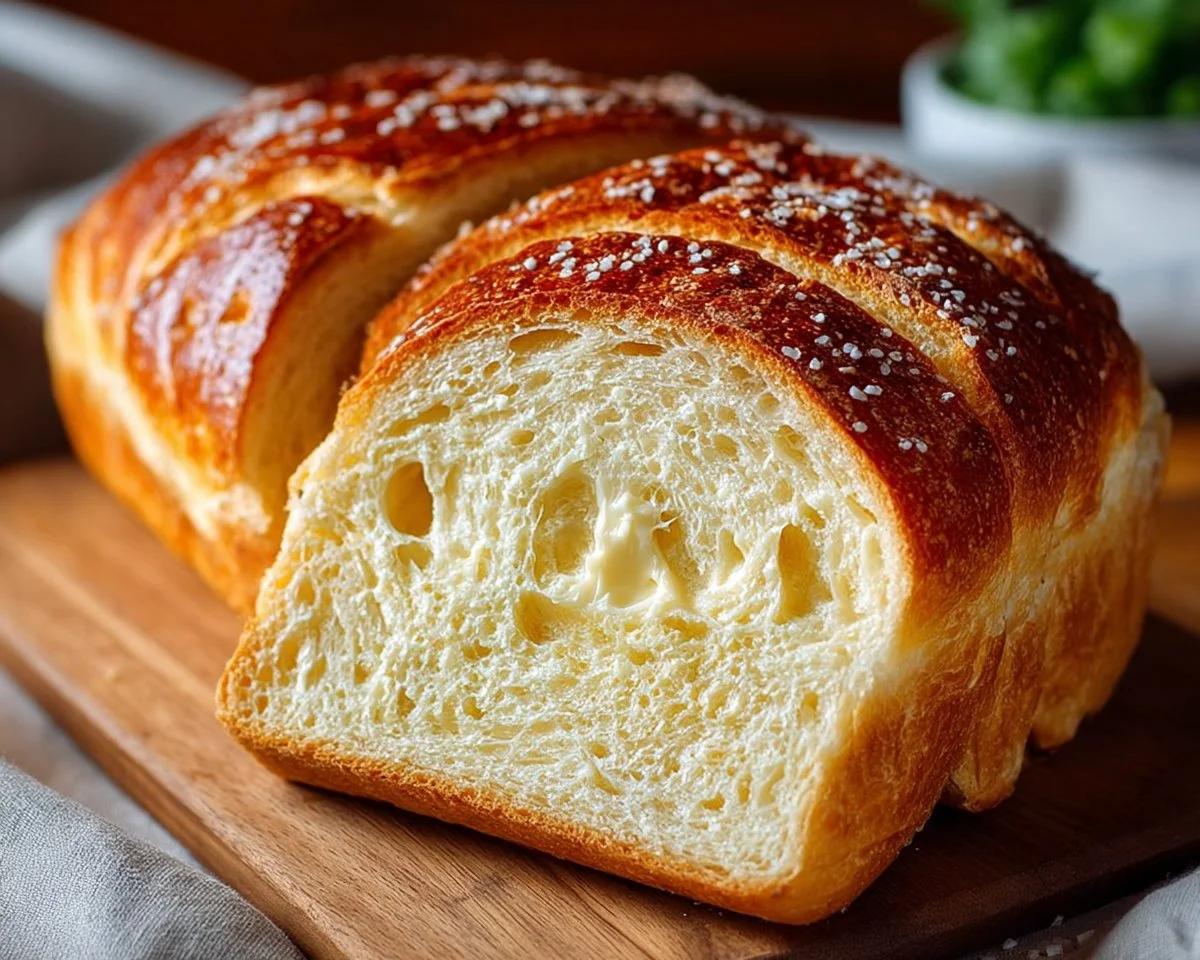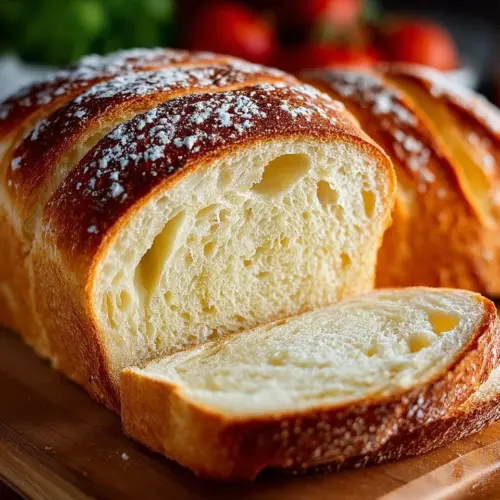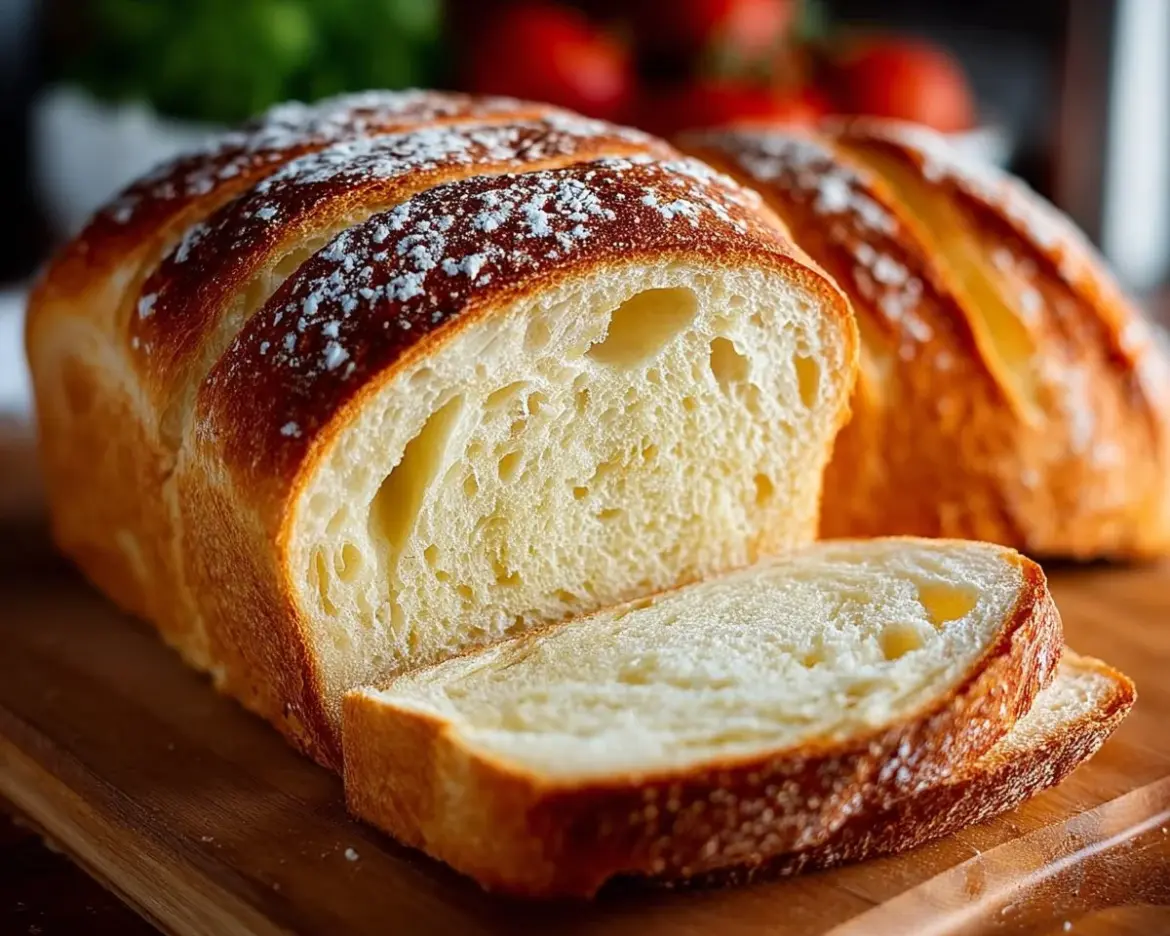Creamy, tender, and irresistibly sandwich-ready — this Sourdough Sandwich Bread is the kind of loaf that turns simple lunches into memorable bites. Whether you’re making grilled cheese for a rainy afternoon or building the ultimate deli-style sandwich, this bread gives you soft crumb, mild tang, and a golden crust that toasts beautifully. Fun fact: a well-fed sourdough starter can outlive kitchen appliances and become a beloved kitchen companion — many bakers name theirs!
This recipe is special because it balances sourdough flavor with a soft, pillowy texture that even sandwich purists will love. It’s simple to prepare, doesn’t demand fancy equipment, and is family-friendly enough for weekday sandwiches but impressive enough for weekend brunch. If you’re curious how it compares with other loaves on the blog, check out this tried-and-true sourdough sandwich bread recipe that inspired my approach. Ready to bake? Let’s make a loaf that disappears fast at the dinner table.
What is Sourdough Sandwich Bread?
What exactly makes this “sourdough sandwich” bread? Is it a loaf groomed specifically to cradle mayo and pickles, or a mystical blend of bubbles and tang? A little of both. This bread is a classic white-and-whole-wheat loaf made with an active sourdough starter to give a gentle, pleasant tang without overwhelming the sandwich fillings. Why the name? Maybe because “the way to a man’s heart is through his stomach,” and a great sandwich is a proven path. Picture a loaf baked with love, sliced thick, then stacked with cheese and tomato — instant devotion. Try this recipe and see which lunchtime loyalties you win over.
Why You’ll Love This:
There are three big reasons you’ll fall for this loaf. First, the texture: soft and tender crumb with just enough spring to hold up to hearty fillings, making every bite comforting and satisfying. Second, cost savings: baking at home saves money compared to store-bought artisanal loaves and lets you control quality—no strange preservatives, just simple ingredients. Third, flavor and versatility: the subtle sourdough tang complements butter, jam, deli meats, and roasted veggies alike, and toppings like seeds or softened butter finish the loaf beautifully.
If you enjoy rich, comforting breads, you might also like the warm, cozy flavors in our apple pie bread pudding for a sweet twist on using leftover bread. Now grab your starter and let’s bake something everyone will ask for again.
How to Make:
Quick Overview
This recipe is straightforward: mix, knead, bulk ferment, shape, proof, and bake in a hot Dutch oven for that crisp crust and soft crumb. Prep time is minimal hands-on — most of the work is gentle rising — so it’s great for busy cooks. You’ll end up with a loaf that toasts beautifully and stays soft for days when stored properly. Approximate times: 15–20 minutes active prep, 4–6 hours bulk fermentation, 30–60 minutes final proof, and about 25–30 minutes bake.
Ingredients
- 3 cups Bread Flour, room temperature
- 1 cup Whole Wheat Flour, room temperature
- 1.5 cups Water, lukewarm (about 75–85°F / 24–29°C)
- 1 tablespoon Salt, fine
- 1 tablespoon Honey (optional), room temperature
- 1 cup Sourdough Starter, active and bubbly (fed 4–8 hours before using)
Directions
- In a large mixing bowl, combine bread flour, whole wheat flour, and salt. Whisk or stir to evenly distribute the salt.
- Add the sourdough starter, honey (if using), and water to the dry ingredients. Mix with a wooden spoon or your hand until a shaggy dough forms with no dry patches.
- Knead the dough on a lightly floured surface for about 10 minutes until it becomes smooth and elastic. You can also use stretch-and-folds in the bowl every 30 minutes for an hour as an alternative to continuous kneading.
- Place the dough in a lightly greased bowl, cover with a clean towel or plastic wrap, and let it rise for 4–6 hours at room temperature, or until doubled in size. Warmer kitchens speed this up.
- Preheat your oven to 450°F (230°C) and place a Dutch oven inside to heat for at least 20–30 minutes so it’s sizzling hot when the dough goes in.
- Once the dough has risen, gently deflate and shape it into a loaf that fits your greased loaf pan or into a round if using parchment for the Dutch oven.
- Place the shaped dough into a greased pan or on parchment, cover, and let it proof for another 30–60 minutes until slightly puffy but not overproofed.
- Carefully remove the hot Dutch oven from the oven; if using a pan, transfer the loaf onto the preheated surface. Place the dough inside the Dutch oven, cover, and bake for 15 minutes to trap steam.
- Remove the lid and bake for an additional 10–15 minutes until the crust is golden brown and the internal temperature reaches 205°F (96°C). If you prefer a darker crust, allow a few extra minutes while monitoring closely.
- Remove the bread and cool on a wire rack for at least 1 hour before slicing to finish the crumb set and make clean slices.

What to Serve With:
- Classic tomato soup or creamy butternut squash soup
- Avocado smash with lemon and chili flakes on toasted slices
- Deli meats, sharp cheddar, and pickles for robust sandwiches
- Soft butter and a selection of jams for breakfast
- Crisp green salad or a slaw to balance rich fillings
- Hot coffee, iced tea, or a sparkling lemonade for refreshment
Top Tips for Perfecting:
- Substitute up to 1/4 cup whole wheat with all-purpose flour if you want a lighter crumb.
- Keep your starter active: feed it regularly so it’s bubbly for best rise.
- If your dough feels very sticky, do stretch-and-folds instead of heavy kneading; this builds strength gently.
- Avoid overproofing: a slight bounce back when poked means it’s ready to bake.
- For extra flavor, brush the top with melted butter right after baking for a softer crust and richer taste.
Storing and Reheating Tips:
- Room temperature: Store in a bread box or wrapped in a clean cotton bag for up to 3 days.
- Refrigeration: Not recommended long-term; refrigeration speeds staling. Use only if your kitchen is very humid, and consume within 3–4 days.
- Freezing: Slice the loaf and freeze slices in an airtight bag for up to 3 months. Toast or defrost slices as needed.
- Reheating: For soft crumb, wrap slices in foil and warm at 300°F (150°C) for 10 minutes. For crisp toast, use a toaster or skillet for a few minutes per side.
FAQs
What if my starter isn’t very active?
If your starter is slow, refresh it with two feeds a day for a couple of days until it’s bubbly. You can also extend the bulk fermentation time to allow for a slower rise.
Can I use all bread flour or all-purpose flour instead?
Yes. Using all bread flour yields a chewier crumb. All-purpose will give a softer, lighter loaf. Keep whole wheat to avoid a too-dense result.
How do I know when the bread is fully baked?
Check for a deep golden crust and an internal temperature of 205°F (96°C). The loaf should sound hollow when tapped on the bottom.
Can I add seeds or herbs?
Absolutely. Fold in up to 1/2 cup of seeds or fold chopped fresh herbs into the dough during the final shaping for added texture and flavor.
Why did my loaf collapse after baking?
Common causes are overproofing, weak starter, or too much moisture. Reduce proof time, ensure starter strength, and trim water slightly if needed.
Conclusion
This Sourdough Sandwich Bread is worth making for its comforting texture, wallet-friendly approach, and versatile flavor that elevates any sandwich or toast. It’s straightforward enough for beginners and satisfying for experienced bakers who love the mild tang sourdough brings. Give it a try, share slices with family or friends, and watch how quickly it becomes a pantry favorite. For another easy-to-follow version and extra baking tips, see Easy Sourdough Sandwich Bread – The Clever Carrot

Sourdough Sandwich Bread
Equipment
- Mixing Bowl
- Dutch Oven
Ingredients
Dry Ingredients
- 3 cups Bread Flour room temperature
- 1 cup Whole Wheat Flour room temperature
- 1 tablespoon Salt fine
Wet Ingredients
- 1.5 cups Water lukewarm (about 75–85°F / 24–29°C)
- 1 tablespoon Honey (optional), room temperature
- 1 cup Sourdough Starter active and bubbly (fed 4–8 hours before using)
Instructions
- In a large mixing bowl, combine bread flour, whole wheat flour, and salt. Whisk or stir to evenly distribute the salt.
- Add the sourdough starter, honey (if using), and water to the dry ingredients. Mix with a wooden spoon or your hand until a shaggy dough forms with no dry patches.
- Knead the dough on a lightly floured surface for about 10 minutes until it becomes smooth and elastic.
- Place the dough in a lightly greased bowl, cover with a clean towel or plastic wrap, and let it rise for 4–6 hours at room temperature, or until doubled in size.
- Preheat your oven to 450°F (230°C) and place a Dutch oven inside to heat for at least 20–30 minutes.
- Once the dough has risen, gently deflate and shape it into a loaf that fits your greased loaf pan or into a round if using parchment for the Dutch oven.
- Place the shaped dough into a greased pan or on parchment, cover, and let it proof for another 30–60 minutes until slightly puffy.
- Carefully remove the hot Dutch oven from the oven; if using a pan, transfer the loaf onto the preheated surface. Place the dough inside the Dutch oven, cover, and bake for 15 minutes to trap steam.
- Remove the lid and bake for an additional 10–15 minutes until the crust is golden brown and the internal temperature reaches 205°F (96°C).
- Remove the bread and cool on a wire rack for at least 1 hour before slicing.

